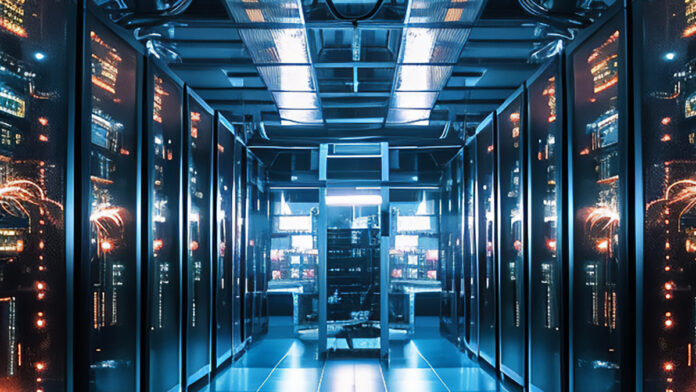EIA highlighted that a major contributor to the revised outlook is the expansion of data centers, particularly those supporting AI workloads
In sum — what to know:
AI fuels surging power demand – U.S. electricity consumption is growing faster than expected, driven in large part by power-hungry AI data centers.
Commercial use outpaces forecasts – Electricity use in the commercial sector, which includes data centers, is projected to grow up to 5% annually through 2026.
Energy mix shifts underway – Less gas, more renewables and coal are expected as natural gas prices rise and electricity demand soars.
The U.S. Energy Information Administration (EIA) has raised its projections for electricity consumption in the country, citing a spike in power demand from commercial sectors—especially data centers—as a key driver. In its latest update of the Short-Term Energy Outlook (STEO), the EIA said it expects total U.S. electricity demand to rise from 4,097 billion kilowatt-hours (kWh) last year to 4,193bn kWh in 2025, and 4,283bn kWh in 2026.
The forecast marks a significant upward revision compared to earlier forecasts, which had anticipated more modest growth. The report says that a major contributor to the revised outlook is the expansion of data centers, particularly those supporting artificial intelligence (AI) workloads. “The revisions are most notable in the commercial sector, where data centers are an expanding source of demand,” the report states.
The EIA report also stated that electricity use in the commercial sector alone is projected to surge 3% this year and 5% in 2026—well above the previously forecast 2% annual average. To meet rising demand, total U.S. power generation is expected to increase by 1% this summer, driven primarily by commercial and industrial usage. The EIA update also anticipates shifts in the U.S. power mix: higher natural gas prices may reduce gas-fired generation, partially offset by increased output from coal, solar and hydroelectric sources.
Although many data centers currently rely on natural gas, its share of the national generation mix is projected to decline from 42% in 2024 to 40% in 2025 and 2026. Meanwhile, coal is expected to remain at 16% through 2025 before falling to 15% in 2026, as renewable energy continues to expand. In December, the Department of Energy reported that data centers across the country accounted for 4.4% of total electricity use in 2023—a figure that could nearly triple to 12% by 2028 if current AI trends continue.
AI data centers are the backbone of modern machine learning and computational advancements. However, one of the biggest challenges these AI data centers face is the enormous power consumption they require. Unlike traditional data centers, which primarily handle storage and processing for standard enterprise applications, AI data centers must support intensive workloads such as deep learning, large-scale data analytics as well as real-time decision-making.
AI workloads, especially deep learning and generative AI models, require massive computational power. Training models such as GPT-4 or Google’s Gemini involves processing trillions of parameters, which requires thousands of high-performance GPUs (Graphics Processing Units) or TPUs (Tensor Processing Units). These specialized processors consume a lot more power than traditional CPUs.
The hardware used in AI data centers is also more energy-intensive than standard computing equipment. GPUs, TPUs and FPGAs (Field Programmable Gate Arrays) are specifically designed for parallel processing, but this efficiency comes at the cost of huge energy demands. Despite their massive energy demands, the industry is actively working on solutions to reduce AI data center power consumption. Some innovations include:
– Energy-efficient AI chips: Companies like Nvidia and Google are developing lower-power, high-performance chips.
– Renewable energy sources: Many AI data centers are transitioning to solar, wind and hydroelectric power.
– AI-driven power optimization: AI technology is being implemented at data centers to optimize energy use, predict cooling needs and improve efficiency.
– Advanced cooling technologies: New liquid cooling methods and even quantum computing research could significantly cut energy demands in the future.

